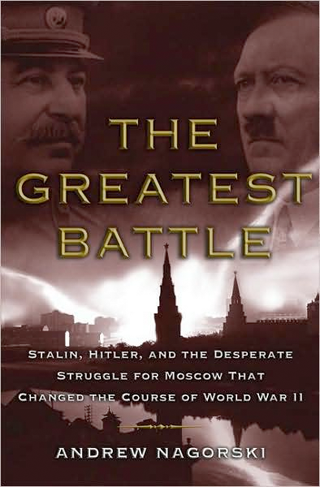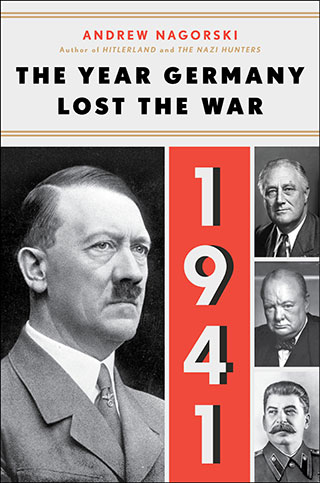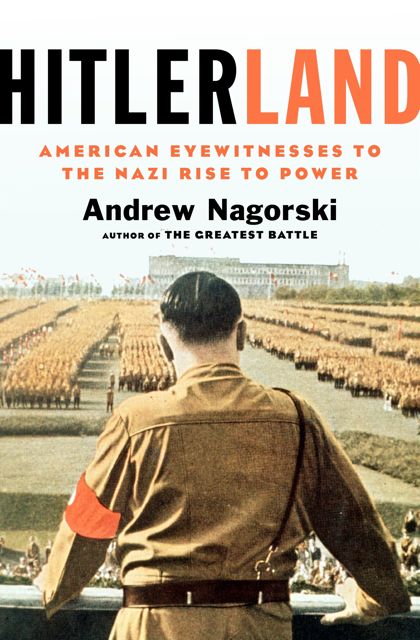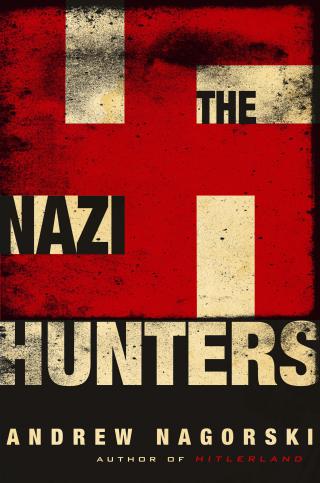Evil on Parade: What were Americans thinking about the Third Reich?
The common counterfactual as it relates to Hitler is somewhat fantastical: If you could go back in time and kill the Austrian madman before he ascended to Germany’s chancellorship, would you do so? Nay, would you be morally obligated to do so? More interesting, perhaps, is the question that arises in Andrew Nagorski’s fascinating look at the rise of Hitler as seen through the eyes of Americans: Would you be morally obligated to stop Hitler from killing himself?
One of the many highlights of Hitlerland comes early on, shortly after the failed Beer Hall Putsch in 1923. Appearing at the doorstep of Putzi and Helene Hanfstaengl in its aftermath—“ghastly, pale, hatless, his face and clothing covered with mud, the left arm hanging down from a strangely slanted shoulder”—Hitler was in a bad state. In the morning, things would get worse: Cornered by officials who had come to the German-American couple’s house in Munich to arrest Hitler, he cried, according to Helene, “Now all is lost—no use going on!” before grabbing a gun and putting it to his head.
Alarmed he might have shot himself, she shouted, “What do you think you’re doing? After all, are you going to leave all the people that you’ve gotten interested in your idea of saving the country and you take your life. . . . They’re looking for you to carry on.”
Nagorski’s study is full of tidbits like this. Expertly cobbling together anecdotes and manuscripts—some published and well-enough known, others not—from Americans present in Germany between the early 1920s and their expulsion after Pearl Harbor, Hitlerland provides a (slightly) different twist on a (relatively) familiar tale. As Nagorski puts it, “The Americans who lived, worked or traveled in Germany at the time when Hitler was coming to power and then forged the Third Reich haven’t attracted anything like the level of attention” as those who lived in France or Great Britain then. And it is instructive to watch American attitudes evolve: from the general revelry in Berlin as it rivaled 1920s Paris as a capital of excess, to detached concern as the Nazis stifled freedom but imposed order during an economic collapse, to dawning dread as Hitler’s power became total and the Wehrmacht plowed mercilessly through Europe.
With hindsight, it’s easy to see Germany’s slide into barbarism take place; Nagorski reminds us that those on the ground did not have our good fortune. Even those within Germany’s borders sometimes had difficulty realizing what was happening. As late as 1939—after Germany had taken Austria, absorbed the Sudetenland, and cowed Europe’s leaders into the Munich Pact—some experienced hands thought peace in their time was within reach. As one correspondent, who had been in Germany since the Great War, wrote in Cosmopolitan: “Hitler has achieved without war what no other man has accomplished for centuries. . . . As I know Der Führer, he will not in his senses stake those achievements and his unique place in history on the uncertain gamble of a deliberately planned aggressive war.”
As might be expected, Adolf Hitler was a figure of some interest to Americans passing through Germany in the 1930s, and the impression was not universally negative: While men found him icy and prone to sputtering rages, women were frequently charmed, whether in nightclubs meeting him for the first time or as the wives of confidants frequently in his orbit. Still, the cult of personality—to say nothing of the cult of fear—that Hitler nurtured was always present. After speaking to the son of an AP bureau chief, who had the misfortune of acting up near Hitler while at the opera, one reporter conceded that “ever afterwards, I could understand how young officers, or anyone else for that matter, would be terrorized by Hitler’s eyes.”
Compulsively readable and deeply researched, Hitlerland delves into the history of the Third Reich without losing a personal touch. Nagorski is aware of the horror many Americans felt as the march toward evil hit full stride, adding details sure to rouse similar feelings in readers. During Kristallnacht, “Charles Thayer, a diplomat assigned to the Berlin consulate, heard horror stories from all around the city. One of his friends witnessed how Nazis threw a small boy from a second-floor window into a mob below. ‘His leg broken, the boy tried to crawl on hands and knees through the forest of kicking black boots until my friend plunged into the mob and rescued him.’ ”
Watching an ostensibly civilized people descend into madness came as a shock to American expatriates, journalists, and diplomats who, almost uniformly, had grown to like the Germans in the interwar years. Their first-person perspectives, largely unknown until now, provide genuine insight into what it meant to live in Hitlerland during those years.
Sonny Bunch is managing editor of the Washington Free Beacon.








